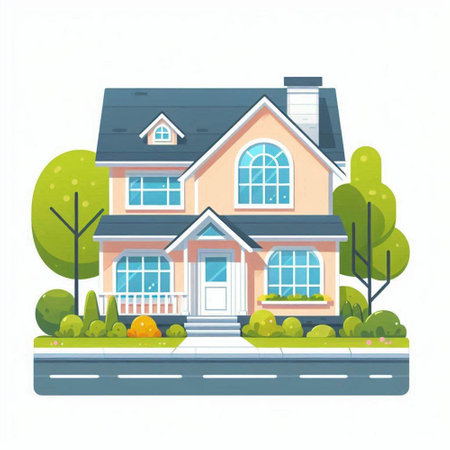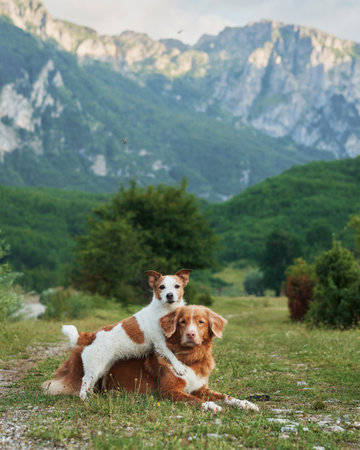1. Living Room Safety
Your living room is a place for relaxation, but it can also pose risks for your pets. Taking a few precautions can help create a safe space for them to play and rest.
Keep Electrical Cords Out of Reach
Puppies, kittens, and even adult pets might find electrical cords tempting to chew on, which can be dangerous. To prevent accidents:
- Use cord covers or cable organizers to keep wires out of sight.
- Secure cords along baseboards or under furniture.
- Unplug devices when not in use to reduce risks.
Secure Heavy Furniture to Prevent Tipping
Pets love to jump and explore, and unstable furniture can easily tip over. Keep your pet safe by:
- Anchoring bookshelves and cabinets to the wall with anti-tip straps.
- Ensuring that TVs are properly mounted or placed on sturdy stands.
- Avoiding placing heavy objects on top of unstable furniture.
Remove Toxic Houseplants
Certain common houseplants can be toxic to pets if ingested. Some plants to avoid include:
| Toxic Plant | Potential Effects on Pets |
|---|---|
| Lilies | Toxic to cats; can cause kidney failure. |
| Pothos (Devil’s Ivy) | Can lead to oral irritation and vomiting. |
| Aloe Vera | Mild toxicity causing vomiting and diarrhea. |
| Sago Palm | Highly toxic; can cause liver failure in dogs and cats. |
If you have any toxic plants, consider replacing them with pet-friendly alternatives like spider plants, Boston ferns, or areca palms.
2. Kitchen Precautions
The kitchen is full of tempting smells and interesting objects, making it one of the most dangerous places for pets. To keep your furry friend safe, follow these simple precautions.
Store Food and Cleaning Supplies Securely
Pets are naturally curious and may try to get into cabinets looking for food or chewing on cleaning supplies. Store all food items, especially those toxic to pets like chocolate, onions, and grapes, in secure cabinets or high shelves. Keep cleaning products locked away or in pet-proof containers.
Keep Trash Cans Covered
Trash cans can contain food scraps and other hazardous materials that could be harmful if ingested by your pet. To prevent accidents:
- Use trash cans with tight-fitting lids or step-on mechanisms.
- Place the trash can inside a cabinet with a childproof lock.
- Take out the trash regularly to minimize temptation.
Avoid Hot Surfaces and Sharp Objects
Your pet might jump onto counters or sniff around while you’re cooking, which can be dangerous. Protect them by following these tips:
| Hazard | Prevention Tip |
|---|---|
| Hot stovetops and ovens | Use stove knob covers and never leave burners unattended. |
| Sharp knives and utensils | Store knives in drawers or knife blocks out of reach. |
| Dropped food and spills | Clean up immediately to prevent ingestion of harmful substances. |
Create a Safe Space for Your Pet
If your pet loves being near you while you cook, set up a designated safe spot where they can stay without being underfoot. A cozy bed or mat in a corner away from appliances is a great way to keep them close but out of harm’s way.

3. Bedroom Protection
Your bedroom should be a peaceful retreat for both you and your pet. However, it can also contain potential hazards. Here’s how to keep your bedroom safe and comfortable for your furry friend.
Keep Small Objects Off the Floor
Pets are naturally curious, and small objects like jewelry, hair ties, or buttons can be tempting to chew on or swallow. To prevent choking hazards:
- Store jewelry in closed containers or drawers.
- Keep hair ties, bobby pins, and other small items in a secure place.
- Regularly check the floor for any dropped objects.
Secure Loose Wires
Cords and wires can be dangerous if chewed on by pets. Secure them properly using these methods:
| Issue | Solution |
|---|---|
| Exposed electrical cords | Use cord covers or hide them behind furniture. |
| Tangled charger cables | Store chargers when not in use and use cable organizers. |
| Cords near the bed | Tape them against walls or use protective tubing. |
Create a Cozy and Safe Sleeping Area
Your pet needs a designated spot where they feel safe and comfortable while resting. Consider these tips:
- Provide a soft pet bed in a quiet corner of the room.
- Avoid placing beds near heaters or vents to prevent overheating.
- If your pet sleeps with you, ensure they have easy access to get on and off safely.
- Avoid using heavy blankets that could restrict movement or cause overheating.
Avoid Toxic Plants & Scents
Certain houseplants and fragrances can be harmful to pets. Keep these in mind:
- Avoid plants like lilies (toxic to cats) and aloe vera.
- Use pet-safe essential oils and air fresheners.
- If using candles, keep them out of reach to prevent burns or accidental tipping.
A well-organized and pet-proofed bedroom ensures both you and your furry companion can relax safely together!
4. Bathroom Hazards
The bathroom may seem harmless, but it can pose several dangers to your pets. From toxic substances to small choking hazards, its important to take precautions to keep this space safe.
Close Toilet Lids
Pets, especially dogs and cats, may be tempted to drink from the toilet bowl. This can expose them to harmful bacteria or chemicals from cleaning products. Keep the toilet lid closed at all times to prevent any accidents.
Store Medications and Cleaning Products Safely
Many medications and household cleaners are toxic to pets if ingested. Store these items in high cabinets or locked drawers that pets cannot access. Avoid leaving pill bottles or cleaning supplies on countertops where curious pets might reach them.
Remove Small Choking Hazards
Bathrooms often have small objects that pets could swallow, leading to choking or digestive issues. Common items to keep out of reach include:
| Potential Hazard | Why Its Dangerous |
|---|---|
| Cotton Swabs | Can cause choking or intestinal blockages if swallowed. |
| Dental Floss | If ingested, it can cause serious digestive problems. |
| Hair Ties | Easily swallowed and may lead to obstructions in the intestines. |
Avoid Slippery Surfaces
Tiled bathroom floors can be slippery, posing a risk of injury for pets who run or jump around. Consider using non-slip mats or rugs to provide better traction and reduce the risk of falls.
5. Outdoor and Garage Dangers
Your outdoor spaces and garage can be full of hidden dangers for pets. From toxic chemicals to sharp tools, its essential to make these areas as safe as possible. Here are some key steps to pet-proof your yard and garage.
Store Toxic Chemicals Safely
Many common outdoor and garage chemicals can be harmful or even fatal if ingested by pets. Be sure to store them securely.
| Chemical | Why Its Dangerous | How to Store It Safely |
|---|---|---|
| Antifreeze | Sweet taste attracts pets, but even small amounts can be deadly | Keep in tightly sealed containers on high shelves or in locked cabinets |
| Pesticides & Herbicides | Toxic if ingested or absorbed through paws | Store in a secure place away from pet areas |
| Fertilizers | Certain ingredients can cause stomach upset or poisoning | Avoid spilling; keep bags sealed and out of reach |
Check for Gaps in Fences and Gates
If your pet spends time in the yard, inspect fences and gates regularly for any gaps or weak spots. Even small openings can be enough for a curious pet to squeeze through and wander off.
Tips for Securing Your Fence:
- Walk the perimeter: Check for holes, loose boards, or gaps under the fence.
- Add barriers: If your pet is a digger, consider placing chicken wire or large stones along the base of the fence.
- Latch gates securely: Ensure all gates have sturdy latches that cannot be easily nudged open.
Secure Tools and Equipment
The garage often stores sharp tools, heavy equipment, and other objects that could harm your pet. Keep these items properly stored:
Storage Tips:
- Lawnmowers & Power Tools: Unplug when not in use and store away from pets.
- Nails & Screws: Keep in containers with lids to prevent accidental ingestion.
- Bicycles & Heavy Objects: Secure against walls or hang them up to prevent tipping over.
Your outdoor space and garage should be just as safe as the inside of your home. By securing chemicals, checking fences, and organizing tools, you can create a safer environment for your furry friend.


